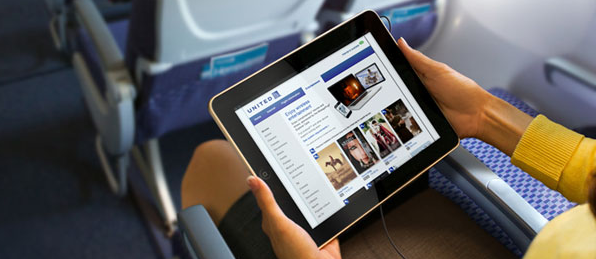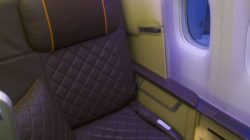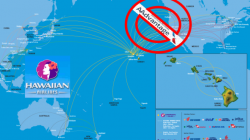There’s a good article on the growing trend of BYOD — Bring Your Own Device — on major airlines, published by Multichannel News (and shared by Runway Girl Network). I found it interesting because it provided more background than usual on the different reasons each airline is implementing these new entertainment options and how they’re choosing to market them. But the basic message boils down to these elements:
- More entertainment options on planes that previously didn’t have any such system.
- A broader mix of pre-recorded and live content, delivered on-demand (rather than following the airline’s programming schedule).
- A better visual experience using modern technology (rather than built-in units that can be up to 10 years old).
On this last point, however, I will argue with a quote by United’s managing director of passenger systems, Tarek Abdel-Halim:
It’s a more private experience for the passenger, and they’re comfortable with the UI [user interface]; they know how to navigate their own device.
Frankly, most of the user interface is the responsibility of the airline and its partners. A modern tablet or laptop computer doesn’t look very different from its competitors on the outside. I choose which models I buy based on the usability of their software, and even then there are individual apps that I will stop using or delete because they are too difficult: the new Wall Street Journal iPhone app, for example, is complete rubbish not because I hate my iPhone or the latest version of iOS but because that particular app does a poor job of letting me navigate stories and download them for off-line reading. I’ll continue to hold United — or any airline — responsible if the BYOD experience is a failure.
I’m more interested in the first and second points. Some readers complained in the comments when I reported that Alaska Airlines was rolling out a BYOD concept on its planes because not everyone has a personal device to view the content. The airline will continue to offer DigEplayers for rent, but it will eventually discontinue them. BYOD remains a superior option for most customers because it has greater potential to be offered on every flight, even short ones. DigEplayers are only available to rent on flights of 2.5 hours or more. Many of my flights around the West Coast are about two hours, which would be a perfect opportunity to read the newspaper and watch a one-hour television show.
What will be interesting is how carriers decide to choose their content. Live television requires some kind of satellite or ground-based communications link whereas pre-recorded content can be stored onboard, and physical storage mediums continue to get smaller and more efficient. Personally, I’ve never subscribed to cable or satellite television. I don’t even bother with an antenna; there is very little live television that I want to watch. Most news is recycled anyway so you can catch up on it later. And while I can see the attraction of live sports, the erratic schedules of air travel suggest to me more people would prefer to record and watch their favorite game after they land.
Regardless of where you stand on these issues, there are enough airlines experimenting with enough different options that one or two will likely pull ahead as clear winners with customers. Check out the article for more details on the approaches taken by Delta, Southwest, United, and their various technology providers.



